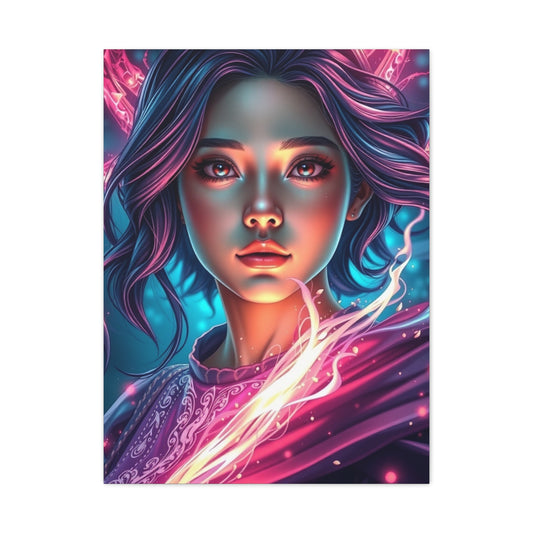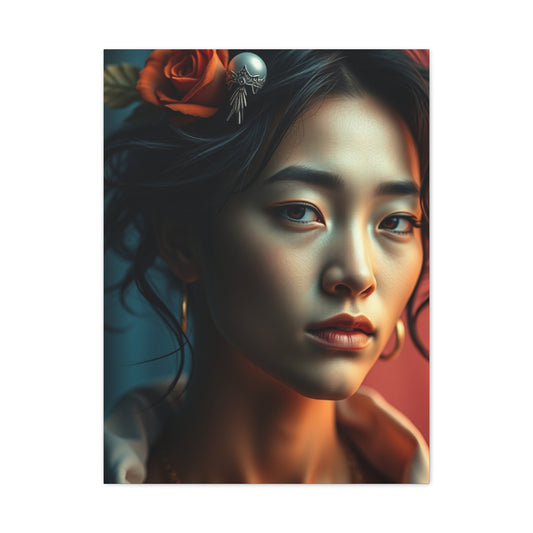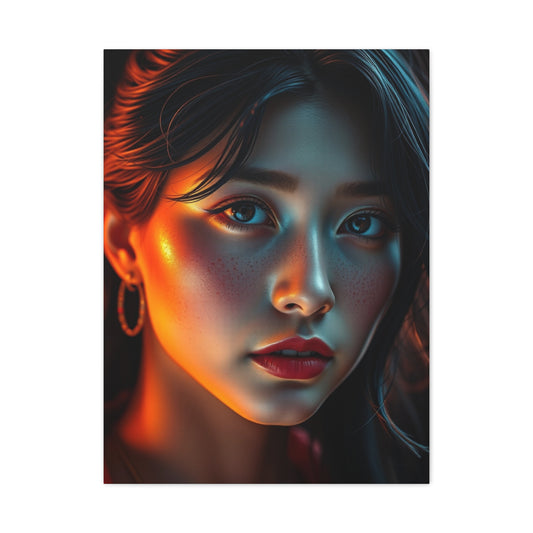Creating Serenity with Hope Wall Art in Small Rooms
Small spaces often present unique challenges when it comes to decorating. Limited wall area can feel restrictive, but thoughtful placement of decor that embodies hope, faith, and love can completely transform the atmosphere. These elements are not merely aesthetic; they carry emotional resonance, turning ordinary walls into a tapestry of personal values and uplifting energy. Choosing wall decor that reflects these themes allows you to infuse a room with a sense of purpose, serenity, and warmth.
The emotional resonance of hope, faith, and love is subtle yet profound. While large spaces may allow for grandiose statements, small spaces demand careful curation. Each piece of wall decor must serve multiple purposes: visual appeal, thematic consistency, and emotional significance. Selecting artwork or decorative pieces that resonate personally with you enhances not only the room’s visual allure but also its psychological ambiance. A small studio, apartment, or corner nook can become a sanctuary of inspiration when adorned with thoughtfully chosen decor.
Incorporating hope, faith, and love into wall decor does not require an overwhelming investment of time or resources. Even a single well-placed quote, handcrafted sign, or canvas print can set the tone for the entire room. The arrangement of these elements should prioritize harmony and balance, ensuring that the space does not feel cluttered despite its limited dimensions. Combining textures, colors, and materials thoughtfully allows for a rich, layered aesthetic that elevates the room’s energy without overwhelming it.
When considering wall decor for small spaces, it is essential to understand the psychological effect of each theme. Hope symbolizes the promise of better days and nurtures an optimistic mindset. Faith provides a grounding force, fostering resilience during challenging times. Love imbues the environment with warmth, empathy, and human connection. When these concepts are thoughtfully integrated into the design of a space, they create an atmosphere that promotes emotional well-being and aesthetic delight simultaneously.
One effective method to bring these themes to life is through artwork featuring meaningful quotes. Text-based wall art can offer succinct yet powerful expressions of hope, faith, and love. Carefully chosen words can inspire reflection, evoke comfort, and provide daily motivation. The typography, color scheme, and material of such pieces further enhance their impact. For instance, soft pastels may evoke tranquility, while deeper hues can reinforce strength and stability. The interplay of words and visual elements ensures that even the smallest wall becomes a source of inspiration and contemplation.
Texture and material choice are equally significant. A wooden plaque engraved with a phrase of encouragement contrasts beautifully with a delicate canvas print or framed illustration. The combination of different surfaces introduces a tactile dimension, enriching the sensory experience of the space. Layering textures subtly invites the eye to explore, making the room feel dynamic yet cohesive. Small spaces, in particular, benefit from such layered arrangements, as they create the illusion of depth without consuming physical space.
Gallery-style arrangements are another effective strategy for small spaces. By grouping multiple pieces, each reflecting elements of hope, faith, and love, walls can transform into compelling focal points. Variations in frame sizes, artwork dimensions, and material types prevent monotony while maintaining thematic unity. When arranging these elements, consider symmetry, balance, and the natural flow of the room. A carefully curated gallery wall allows multiple pieces to interact visually, fostering a cohesive narrative that resonates emotionally with anyone who enters the space.
Personalization is crucial when incorporating these themes into wall decor. Mass-produced pieces may offer aesthetic appeal, but unique or handcrafted items carry an emotional weight that mass-market products cannot replicate. Hand-painted canvases, wooden signs with intricate carvings, or framed personal photographs can make the decor deeply personal. These pieces reflect your values, experiences, and aspirations, transforming a small space into a sanctuary of meaning and reflection. Personalization ensures that the decor not only fills space but enriches it with intention and purpose.
Lighting plays a subtle yet pivotal role in showcasing hope, faith, and love-themed decor. Even a modest light fixture can dramatically alter the perception of a wall, enhancing colors, textures, and overall ambiance. Soft, diffused lighting promotes a sense of calm and intimacy, while strategically placed accent lights highlight individual pieces, drawing attention to their details and significance. Small spaces benefit from such thoughtful lighting, as it prevents walls from appearing flat or lifeless while reinforcing the thematic essence of the decor.
Color selection is another vital consideration in small-space decor. Lighter hues tend to open up a room, creating an airy and spacious feel, whereas richer tones can evoke warmth and coziness. Integrating the colors of hope, faith, and love into the palette—soft blues, gentle creams, muted greens, and subtle pinks—can harmonize with existing decor while reinforcing the emotional undertones. Contrasts can also be employed judiciously to make individual pieces pop without disrupting the overall serenity of the space.
Integrating multifunctional decor can further optimize small spaces. Mirrors with inspirational quotes, wall-mounted shelves displaying decorative items with emotional significance, and compact frames that can hold multiple images are ways to maximize visual interest without sacrificing functionality. Multifunctional design not only saves space but also ensures that every element contributes both aesthetically and thematically, enhancing the room’s emotional and visual depth simultaneously.
Consistency in theme is key when decorating with hope, faith, and love. While variety in texture, color, and material adds intrigue, the underlying message should remain coherent. Each piece should reinforce the overarching narrative, ensuring that the decor communicates a unified vision. Small spaces, due to their compact nature, magnify thematic inconsistencies; maintaining alignment across all elements guarantees that the room’s aesthetic and emotional impact is compelling and immersive.
Creating a sanctuary in a small area extends beyond visual appeal. The presence of hope, faith, and love in decor affects the mood and energy of those inhabiting the space. Walls that communicate positivity and resilience subtly influence daily routines, interactions, and overall emotional well-being. Every glance at an inspiring quote, handcrafted illustration, or thoughtfully arranged gallery piece can evoke reassurance and encouragement, transforming ordinary moments into meaningful experiences.
Selecting Meaningful Quotes and Artwork for Hope, Faith, and Love Decor
Choosing wall decor for small spaces requires thoughtful consideration, particularly when focusing on themes of hope, faith, and love. Words carry power; a simple phrase can evoke profound emotions and influence the ambiance of a room. Artwork and typography that convey these concepts not only enhance the visual appeal but also infuse the environment with intention, serenity, and a sense of purpose. Curating a collection of meaningful quotes and art pieces allows a space to resonate emotionally while remaining stylish and cohesive.
The process of selecting quotes begins with introspection. Consider phrases that personally resonate, inspire reflection, or reinforce values you wish to nurture within your environment. Quotes about hope can instill optimism and resilience, reminding inhabitants of the potential for growth and transformation even in challenging circumstances. Faith-based expressions provide grounding and stability, offering comfort during moments of uncertainty. Expressions of love cultivate warmth, empathy, and connection, reinforcing bonds between the people who share the space. Choosing words that reflect your unique emotional landscape ensures that the decor remains authentic and impactful.
Typography plays a crucial role in conveying the essence of the selected phrases. Different fonts evoke varied emotions: flowing script can communicate elegance and gentleness, whereas bold sans-serif typefaces often suggest strength and clarity. Combining multiple typographic styles in a single arrangement can create visual intrigue, but it is important to maintain harmony. In small spaces, balance is particularly vital, as overly complex combinations may feel chaotic or overwhelming. Using complementary styles while emphasizing readability ensures that the message remains clear and visually appealing.
Color integration is another essential aspect of artwork selection. Subtle hues often enhance a sense of tranquility, while vibrant colors can energize and uplift a space. The emotional undertones of hope, faith, and love can be emphasized through color choices—soft pastels evoke serenity and comfort, muted greens suggest renewal and growth, and warm pinks or reds convey affection and intimacy. Coordinating these colors with existing furnishings and wall tones ensures a cohesive environment, making each piece feel like a deliberate extension of the room rather than a disconnected addition.
Artwork featuring abstract or symbolic elements can complement textual pieces, offering layers of meaning and visual interest. For example, abstract representations of growth, light, or interconnectedness can subtly reinforce themes of hope and love without explicitly stating them. Symbols of faith, such as minimalist icons or stylized imagery, provide a grounding presence that harmonizes with more verbal expressions. Combining textual and symbolic artwork allows small spaces to exude depth, encouraging contemplation and emotional engagement from anyone who enters.
Handcrafted artwork carries a unique resonance that mass-produced items often lack. Pieces created with care and intention convey authenticity and individuality, making the decor feel personal rather than generic. Handmade canvases, wooden engravings, or hand-painted illustrations can serve as visual anchors, drawing the eye while communicating the central themes. The subtle imperfections and unique characteristics inherent in handcrafted items enhance the sense of intimacy and warmth within a small space, creating an environment that feels lived-in and emotionally rich.
Scale and proportion are crucial when arranging quotes and artwork in limited spaces. Oversized pieces may dominate the room, while tiny items risk being overlooked. Balancing size ensures that each element contributes meaningfully to the overall design without overpowering the space. Consider grouping smaller pieces to create a focal cluster or using a single statement piece to draw attention strategically. Proper proportion enhances both visual harmony and thematic impact, allowing the decor to resonate fully within the confines of a small room.
Placement strategies can further amplify the emotional resonance of hope, faith, and love-themed artwork. Eye-level positioning ensures that phrases are immediately accessible and engaging. In corners or above furniture, artwork can serve as both decorative and inspirational elements, subtly influencing mood and perception. Aligning pieces thoughtfully with the room’s architectural features—such as shelves, windows, or alcoves—enhances the integration of decor with the space, ensuring a seamless and intentional aesthetic experience.
Layering textual and visual elements adds depth and sophistication to a small area. Combining framed quotes with complementary imagery, illustrations, or textured surfaces creates a multidimensional effect that draws attention without cluttering the room. The juxtaposition of materials—smooth canvas, rough wood, metallic accents—introduces tactile variety, enriching the sensory experience. In compact spaces, such careful layering maximizes visual interest while maintaining clarity and balance.
When selecting artwork and quotes, consider longevity and emotional adaptability. Choose phrases that maintain relevance over time, supporting continuous reflection and inspiration. Avoid overly trendy expressions that may lose significance, opting instead for timeless statements that resonate across moods and seasons. The permanence of well-chosen phrases fosters a sense of stability and continuity, reinforcing the presence of hope, faith, and love in the room consistently.
Personal connections can elevate the impact of decor. Incorporating quotes from loved ones, personal writings, or meaningful passages from literature imbues the space with unique narrative depth. Framing handwritten notes or letters alongside professional artwork adds a dimension of intimacy and sentimentality. Small spaces, in particular, benefit from such personal touches, as they allow inhabitants to feel emotionally anchored within the environment while reinforcing the thematic intent of hope, faith, and love.
Consider integrating mixed media to create richer, more engaging displays. Layering paper, fabric, metal, or other materials within a single piece or arrangement adds texture and visual intrigue. Mixed media pieces can include hand-stitched phrases, embossed designs, or layered prints, offering tactile and visual complexity. In a small space, these combinations provide depth without consuming additional floor or wall area, maximizing both aesthetic and thematic impact.
Flexibility in arrangement is another advantage of small-space decor. Interchangeable frames, modular panels, or lightweight hanging options allow for adjustments and updates without significant effort. This adaptability ensures that the decor can evolve alongside changing tastes, emotional needs, or seasonal themes. By maintaining a core commitment to hope, faith, and love, the room can adapt dynamically while preserving its inspirational essence.
Lighting considerations further enhance the presentation of quotes and artwork. Natural light illuminates colors and textures, while artificial lighting can highlight specific elements and create a mood. Accent lights, LED strips, or strategically placed lamps ensure that each piece is visually prominent and emotionally resonant. The interplay of light and shadow emphasizes dimensionality, particularly in small spaces where every detail contributes significantly to the overall aesthetic.
Incorporating thematic cohesion across multiple pieces strengthens the room’s narrative. While variety in medium, size, or color adds intrigue, maintaining alignment with the core motifs of hope, faith, and love ensures that the space feels intentional and harmonious. This cohesion transforms a collection of individual pieces into a holistic environment, where each item interacts meaningfully with the others, creating a unified emotional and visual experience.
When curating artwork for compact areas, remember that less can be more. Avoid overcrowding walls with excessive pieces, which may dilute their impact. Select statements and visuals that complement one another, creating a balance between presence and restraint. Carefully chosen elements can command attention, inspire reflection, and elevate the mood of the space more effectively than a cluttered arrangement.
Finally, consider integrating interactive or experiential elements. Pieces that invite participation—such as journals displayed alongside inspirational quotes, or writable boards with affirmations—engage inhabitants actively with the themes of hope, faith, and love. Such interaction deepens emotional resonance and fosters a more immersive, personal connection with the decor. Small spaces benefit particularly from this strategy, as it allows the area to serve not just as a visual environment, but as a living, emotionally dynamic setting.
Exploring Textures, Materials, and Layering Techniques in Hope, Faith, and Love Wall Decor
In small spaces, the tactile and visual qualities of wall decor can profoundly impact the atmosphere. Beyond imagery and text, the choice of materials and textures plays a critical role in conveying the themes of hope, faith, and love. Thoughtful layering and material selection create depth, intrigue, and an immersive sensory experience, transforming modest walls into dynamic, emotionally resonant environments.
The Significance of Material Choice
The material of wall decor influences not only aesthetics but also the emotional resonance of a space. Wooden plaques evoke warmth and natural simplicity, grounding the room with organic textures. Metal elements, such as delicate frames or sculptural accents, introduce subtle gleam and sophistication. Canvas provides a soft, malleable surface that enhances both painted and printed works. By combining diverse materials, small spaces can achieve a rich interplay of surfaces that amplifies visual interest without occupying additional floor area.
Textural contrast adds dimension and vitality. Smooth, glossy surfaces juxtaposed with rough, matte finishes create a sensory dialogue that encourages exploration and engagement. For example, a polished metallic quote framed against a raw wooden backdrop produces a striking visual contrast, emphasizing the artwork while reinforcing the thematic depth of hope, faith, and love. Layering textures transforms a small space, making walls feel multidimensional and visually expansive.
Layering Techniques for Emotional Depth
Layering involves arranging multiple elements at varying depths, combining visual, tactile, and sometimes interactive components. In small spaces, layering maximizes impact by creating the illusion of a larger, more complex environment. One effective technique is to pair a primary statement piece with secondary accents that complement its message. For instance, a large canvas with a hopeful quote can be flanked by smaller framed photographs, handmade ornaments, or subtle three-dimensional embellishments. This method reinforces thematic cohesion while maintaining visual harmony.
Another layering approach involves overlapping frames and panels. Slightly offsetting pieces of varying sizes creates a sense of movement and depth, transforming a flat wall into a dynamic narrative landscape. This approach works exceptionally well for themes like hope, faith, and love, where the interplay of elements mirrors the multidimensional nature of these emotions. Even in compact areas, layered arrangements prevent monotony and draw viewers’ attention to the subtleties of texture and composition.
Incorporating Natural Elements
Nature-inspired materials contribute both aesthetic and emotional richness. Wooden frames, woven fibers, and stone-like textures evoke a sense of stability, grounding, and calm. Integrating natural elements aligns with the symbolic qualities of hope, faith, and love: wood suggests growth and endurance, stone conveys permanence and strength, and textiles introduce warmth and comfort. In small spaces, these materials provide a sensory anchor, making the room feel more intimate and nurturing.
Plants and botanical motifs can enhance textural diversity without overwhelming the limited space. Small, wall-mounted planters or artwork featuring leaf patterns, floral engravings, or natural fibers add a verdant touch. The juxtaposition of living or nature-inspired elements with traditional art pieces amplifies the thematic essence, reinforcing vitality, renewal, and emotional balance within the environment.
Combining Handmade and Industrial Textures
Integrating handcrafted items alongside industrial materials creates an engaging contrast. Hand-painted canvases, stitched textiles, or carved wooden signs convey authenticity and individuality, while metal accents, glass frames, or concrete-inspired finishes introduce precision and modernity. This combination reinforces the multidimensional qualities of hope, faith, and love, balancing softness with structure and emotion with clarity. Small spaces particularly benefit from this juxtaposition, as it allows for maximum sensory engagement without physical overcrowding.
Strategic Placement for Layering
Effective layering requires careful placement. Depth can be created by staggering elements along the wall plane. Items mounted slightly in front of others, or using shadow boxes and protruding frames, enhance three-dimensionality. Ledges or floating shelves serve as platforms for layering smaller pieces, allowing for flexible rearrangement and seasonal updates. Thoughtful positioning ensures that each layer contributes to the overall narrative without obstructing or competing with adjacent pieces.
Lighting further enhances layered arrangements. Ambient light illuminates broader compositions, while accent lighting highlights individual textures and details. Soft shadows produced by overlapping elements create subtle visual interest and emphasize dimensionality. In compact spaces, strategic illumination ensures that layered designs feel intentional and sophisticated rather than cluttered.
Textiles and Fabric Integration
Textiles offer versatility in texture and color. Fabric wall hangings, tapestries, or embroidered pieces introduce softness and tactile warmth, complementing harder surfaces like wood, metal, or glass. Embroidered phrases or woven motifs reflecting hope, faith, and love carry a handcrafted charm that enhances emotional resonance. Additionally, textiles absorb light subtly, softening the room’s ambiance and contributing to a cozy, contemplative environment.
Incorporating layers of fabric can also create dynamic focal points. For example, a small tapestry featuring an uplifting quote can be complemented by lightweight fabric panels, creating movement and fluidity. The interplay between rigid frames and flexible textiles introduces visual rhythm, enriching the aesthetic without consuming additional space.
Dimensional Art and Sculptural Accents
Three-dimensional wall decor adds unique texture and intrigue. Sculptural pieces, such as metal or wooden reliefs, shadow boxes, or mixed-media installations, break the flatness of traditional artwork. In small areas, dimensional art draws attention and encourages viewers to engage with the space actively. These pieces can echo themes of hope, faith, and love symbolically, using forms, patterns, and layering techniques to convey emotion without relying solely on text.
Mixed Media and Innovative Combinations
Mixed media provides endless opportunities to explore texture and depth. Combining paint, metal, fabric, wood, and natural elements in a single piece creates complex, multidimensional artwork that embodies thematic richness. For instance, a wall panel could feature a painted background with raised wooden lettering and fabric accents, creating a tactile and visual experience that communicates hope, faith, and love on multiple sensory levels. Small spaces particularly benefit from this approach, as it maximizes impact while minimizing spatial footprint.
The Role of Subtle Imperfections
Intentional imperfections in handcrafted decor contribute character and emotional resonance. Slight irregularities in paint strokes, carved lettering, or woven patterns convey authenticity and humanity, enhancing the warmth of hope, faith, and love-themed environments. These imperfections make each piece unique, reinforcing the notion that spaces can embrace individuality and imperfection while remaining harmonious and beautiful.
Harmonizing Textures with Color
Texture and color are deeply intertwined. Light-toned textures, such as soft linens or pale woods, evoke openness and tranquility, while darker or richer textures suggest depth, grounding, and stability. Combining textures that vary in both feel and tone enhances the spatial experience, creating layers that guide the eye and influence mood. In small rooms, this balance ensures that the space feels expansive yet intimate, maintaining a cohesive narrative of hope, faith, and love.
Interactive and Multi-Sensory Layering
Interactive decor can enrich layering strategies. Chalkboard panels, modular frames, or corkboards allow inhabitants to engage actively with the wall, adding personal messages, quotes, or mementos. This interaction creates a dynamic environment that evolves with emotional needs, reinforcing the themes of hope, faith, and love. Multi-sensory experiences, such as combining visual elements with subtle textures or tactile surfaces, engage occupants more deeply, creating a lasting emotional connection.
Sustainability and Material Mindfulness
Selecting sustainable or eco-friendly materials adds an ethical dimension to decor. Reclaimed wood, recycled metals, and natural fabrics not only contribute to environmental responsibility but also enhance authenticity and warmth. Sustainable choices echo the nurturing and enduring qualities associated with hope, faith, and love, reinforcing the symbolic significance of the space while reflecting conscious living.
Integrating Personal Artifacts
Layering techniques are enhanced by incorporating personal artifacts. Small keepsakes, framed photographs, or handmade gifts integrated with artwork and text create a narrative that is uniquely yours. Each object adds depth, texture, and meaning, making walls both visually appealing and emotionally rich. Small spaces particularly benefit from this approach, as compact arrangements can convey a wealth of narrative without overwhelming the room physically.
Maintaining Cohesion Amid Diversity
While textures and materials introduce variety, cohesion is crucial. Harmonizing colors, shapes, and thematic elements ensures that layered arrangements remain unified. Strategic repetition of textures or complementary material combinations creates rhythm and balance, preventing small spaces from appearing chaotic. The interplay of diversity and cohesion enhances both aesthetic appeal and thematic clarity, allowing hope, faith, and love to resonate powerfully.
Gallery Wall Arrangements and Personalization in Hope, Faith, and Love Decor
Gallery wall arrangements offer a compelling way to convey themes of hope, faith, and love in small spaces. By thoughtfully curating a collection of art pieces, photographs, and decorative objects, walls can transform into dynamic narratives that reflect personal values and emotional depth. In addition to aesthetics, gallery walls create a sense of cohesion, turning multiple individual items into a harmonious ensemble that resonates with warmth, inspiration, and intention.
The Essence of Gallery Walls
A gallery wall is more than a simple display; it is a narrative canvas that allows each piece to contribute to a larger story. Themes of hope, faith, and love can be woven into this narrative, guiding viewers through a visual journey of positivity, resilience, and connection. Small spaces particularly benefit from this approach, as gallery walls maximize visual impact without overwhelming the room, transforming ordinary walls into focal points that inspire reflection and contemplation.
Planning Your Arrangement
Successful gallery walls begin with careful planning. Start by identifying the central theme or message you wish to convey. Select a primary piece, such as a large canvas or framed quote, to serve as the anchor. Surrounding elements—smaller artwork, photographs, or handcrafted items—should complement the anchor both thematically and aesthetically. Consider the balance of shapes, colors, and sizes to ensure a cohesive, visually engaging composition.
Measuring wall space is crucial to avoid overcrowding or disproportionate arrangements. Sketching the layout on paper or using removable templates on the wall can help visualize spacing and alignment. In small spaces, maintaining appropriate margins around the collection preserves a sense of openness, preventing the gallery from feeling cramped or cluttered.
Mixing Mediums and Styles
One of the most effective techniques for gallery walls is the integration of multiple mediums. Combining framed prints, canvas paintings, wooden plaques, and three-dimensional objects introduces variety while emphasizing thematic unity. Text-based pieces expressing hope, faith, and love can coexist alongside symbolic or abstract artwork, creating layers of meaning. The interplay of different materials and finishes enhances texture and visual intrigue, ensuring the wall feels multidimensional and immersive.
Variations in style can also add sophistication. Modern typographic prints may be paired with handmade or rustic elements, striking a balance between contemporary clarity and authentic warmth. Even within contrasting styles, maintaining alignment in the color palette or conceptual theme ensures harmony. In small spaces, this careful calibration prevents visual chaos while reinforcing emotional resonance.
Symmetry Versus Asymmetry
Symmetrical arrangements offer a sense of order, stability, and calm. Centering a primary piece and flanking it with matching or proportional elements can create a structured, cohesive appearance. Symmetry works well in spaces where serenity and clarity are prioritized, supporting the reflective qualities associated with hope, faith, and love.
Asymmetrical arrangements, on the other hand, introduce energy and dynamism. By varying sizes, orientations, and spacing, asymmetrical layouts convey movement and spontaneity. This approach allows for greater flexibility, accommodating diverse mediums and personal artifacts. Small spaces can particularly benefit from asymmetry, as it prevents the room from feeling static and encourages exploration of each unique element.
Incorporating Personal Touches
Personalization is key to ensuring that a gallery wall resonates emotionally. Photographs of loved ones, handwritten notes, or small heirlooms can be interspersed with artistic and textual pieces, creating a deeply intimate display. Items with sentimental value not only enhance the thematic relevance of hope, faith, and love but also anchor the space in lived experience. Each addition transforms the wall from a mere decorative feature into a repository of memory, intention, and personal narrative.
Handcrafted elements amplify the sense of individuality. A hand-painted canvas, carved wooden plaque, or embroidered piece carries subtle imperfections that add warmth and authenticity. These tactile qualities engage viewers on both visual and emotional levels, reinforcing the human element of hope, faith, and love in the room. In small spaces, personalized touches elevate the gallery wall beyond decoration, making it a profound expression of identity and values.
Layering Within a Gallery
Layering is an essential strategy for gallery walls. Overlapping frames or incorporating three-dimensional pieces creates depth and visual interest, transforming flat surfaces into multidimensional experiences. Floating shelves can be added to support smaller items, such as sculptures, plants, or candles, extending the gallery beyond two dimensions. In compact areas, thoughtful layering maximizes impact without consuming additional floor space, ensuring that each element contributes to the narrative while maintaining balance and cohesion.
Shadow boxes and relief-style art pieces are particularly effective for layering. These pieces protrude from the wall, offering tactile engagement and subtle variation in height and depth. By combining flat and dimensional elements, the gallery wall becomes more immersive, encouraging interaction and contemplation. This multidimensional approach aligns naturally with the complex emotional themes of hope, faith, and love.
Color Coordination and Visual Flow
Color selection is a critical component of gallery wall design. While variety can add interest, maintaining a cohesive palette ensures visual harmony. Complementary tones or recurring color motifs unify disparate pieces, reinforcing thematic consistency. For themes of hope, faith, and love, soft pastels, warm neutrals, and muted accent colors can evoke serenity, stability, and emotional warmth. Strategically placed pops of richer hues create focal points without overwhelming the composition.
Visual flow guides the viewer’s eye across the wall. Aligning elements along implied lines or curves encourages natural movement, ensuring that attention is drawn sequentially to each piece. In small spaces, maintaining an intuitive flow prevents the arrangement from appearing fragmented, supporting both aesthetic cohesion and thematic clarity.
Integrating Inspirational Quotes
Text-based pieces often serve as the narrative backbone of a gallery wall. Quotes reflecting hope, faith, and love can anchor the arrangement, providing clarity and emotional focus. These elements can be emphasized through size, typography, or placement, drawing attention while harmonizing with surrounding artwork. Combining quotes with symbolic or abstract visuals enhances both depth and resonance, creating a multidimensional storytelling experience.
Seasonal or Rotational Updates
Gallery walls in small spaces can be designed to accommodate seasonal or rotational updates. Modular frames, removable hooks, or versatile shelves allow for easy swapping of pieces, ensuring that the wall remains fresh and engaging. Changing elements according to personal milestones, seasonal inspiration, or evolving emotional needs maintains the relevance of hope, faith, and love in the space, reinforcing ongoing reflection and engagement.
Balancing Minimalism and Complexity
While gallery walls often involve multiple pieces, balance is crucial. Overcrowding can diminish the impact of individual elements, while sparse arrangements may feel incomplete. Striking a balance between minimalism and complexity ensures that each piece contributes meaningfully to the overarching narrative. In small spaces, careful spacing and proportion maintain clarity, allowing the emotional themes to resonate without visual overwhelm.
Incorporating Functional Decor
Functional objects can be seamlessly integrated into gallery walls, enhancing both aesthetics and practicality. Shelves can support small plants, candles, or mementos, adding dimensionality and purpose. Mirrors or magnetic boards incorporated into the arrangement expand the spatial perception and offer interactive engagement. By blending functionality with visual storytelling, small spaces achieve both beauty and utility while reinforcing the thematic essence of hope, faith, and love.
Interactive Personalization
Encouraging interaction enhances the emotional significance of a gallery wall. Writable surfaces, removable notes, or rotating personal artifacts allow inhabitants to engage actively with the display. This dynamic approach fosters an evolving connection with the themes of hope, faith, and love, creating a living, adaptable narrative. Small spaces benefit from such interactivity, as it transforms the walls from passive decoration into participatory and meaningful elements of daily life.
Maintaining Emotional Resonance
The ultimate goal of a gallery wall is to cultivate an emotional atmosphere. Each piece should contribute intentionally to the narrative, reinforcing hope, faith, and love through imagery, text, or symbolic reference. Cohesion in tone, color, and theme ensures that the wall communicates a unified message, enhancing the room’s overall ambiance. Small spaces, due to their intimacy, magnify the impact of thoughtful curation, making each detail count in shaping mood and perception.
Lighting, Color, and Multifunctional Decor for Hope, Faith, and Love in Small Spaces
The thoughtful integration of lighting, color, and multifunctional decor can transform small spaces into vibrant, emotionally resonant environments. When emphasizing themes of hope, faith, and love, these elements work together to enhance both aesthetic appeal and psychological impact. By strategically combining illumination, tonal harmony, and versatile design solutions, walls and rooms become immersive spaces that uplift, inspire, and nurture the senses.
The Role of Lighting in Emotional Design
Lighting is a pivotal factor in shaping perception, mood, and spatial depth. In small spaces, effective illumination can expand the visual sense of area while emphasizing the thematic essence of hope, faith, and love. Soft, diffused ambient lighting creates warmth and intimacy, reinforcing the emotional comfort associated with these concepts. Layered lighting, including accent and task lights, adds dimension and guides attention to key decorative elements such as inspirational quotes, symbolic artwork, or textured wall features.
Accent lighting, particularly directed at wall decor, can highlight textures and colors, enhancing the multidimensionality of layered arrangements. Adjustable wall sconces, track lighting, or LED strips allow for flexibility, ensuring that lighting complements evolving displays. Shadows cast by dimensional artwork or layered frames introduce subtle depth, creating an interplay of light and darkness that evokes contemplative serenity and reinforces emotional resonance.
Natural light, when available, enhances the vibrancy of colors and the clarity of details in small spaces. Positioning artwork or textured decor near windows or light sources allows sunlight to animate surfaces, emphasizing textures, metallic accents, or fabric patterns. Even limited natural light can be optimized with reflective surfaces, mirrors, or strategically positioned lighter-colored decor, amplifying brightness while maintaining thematic coherence.
Color as an Emotional and Spatial Tool
Color profoundly influences mood, perception, and the thematic expression of hope, faith, and love. In small spaces, tonal choices can enhance the sense of openness, warmth, and emotional balance. Soft neutrals, pastel hues, and muted earthy tones evoke calmness, serenity, and stability, creating a nurturing backdrop for layered or gallery-style decor. Deeper, warmer shades—such as rich reds, burgundies, or ochres—introduce intimacy and passion, underscoring the loving aspect of the design narrative.
Harmonizing color across walls, decor, and accents reinforces cohesion, ensuring that individual elements contribute to a unified visual story. Color repetition across artwork, frames, textiles, or even furniture pieces establishes rhythm and flow, guiding the eye naturally across the space. Thoughtful integration of contrasting or accent colors can draw attention to focal points, such as an inspirational quote or dimensional artwork, amplifying its emotional and visual impact without overwhelming the small room.
Gradient and ombré techniques in wall finishes or textiles can subtly convey themes of hope and progression. For instance, a wall transitioning from soft blue to warm beige can symbolize the journey from contemplation to emotional warmth. Such nuanced applications of color engage viewers visually and psychologically, enhancing the presence of hope, faith, and love in a small, curated space.
Multifunctional Decor for Maximum Impact
In compact spaces, multifunctional decor allows for efficiency without sacrificing aesthetic or thematic intent. Shelving units that double as display platforms for artwork, plants, or personal mementos combine utility with emotional storytelling. Wall-mounted organizers or cubbies can hold keepsakes, candles, or books, integrating functional purpose with decorative appeal. Each element contributes not only to the visual composition but also to the lived experience of hope, faith, and love within the environment.
Mirrors are particularly effective multifunctional elements. They expand visual space, enhance natural light, and can reflect key pieces of artwork or text, reinforcing thematic focus. Incorporating mirrors with inspirational quotes etched onto the surface or positioned strategically to highlight gallery walls adds depth while maintaining a compact footprint. Reflective surfaces also enhance color vibrancy, amplifying the emotional tone of surrounding decor.
Furniture can also contribute to multifunctional design. Wall-mounted desks, foldable shelving, or storage benches provide practical solutions while doubling as display areas for curated decor. Each surface becomes an opportunity to reinforce hope, faith, and love through personal artifacts, framed quotes, or handcrafted items, maximizing both spatial efficiency and thematic resonance.
Integrating Lighting, Color, and Decor Harmoniously
The interaction of lighting, color, and multifunctional elements requires careful orchestration. Light enhances color vibrancy, highlights textures, and directs attention, while color sets the emotional tone and unifies disparate decor pieces. Multifunctional elements serve as both functional anchors and thematic canvases, allowing small spaces to convey layered meaning without visual or physical clutter. Harmonizing these elements ensures that the room feels expansive, cohesive, and emotionally enriched.
The Importance of Scale and Proportion
Small spaces necessitate meticulous attention to scale and proportion. Overly large decor can dominate and restrict visual flow, while excessively small items may feel insignificant. Proportionate integration ensures that lighting fixtures, artwork, and multifunctional elements complement rather than compete with one another. For gallery walls or layered decor, maintaining relative size differences adds dimension while preserving clarity. Thoughtful scaling reinforces the presence of hope, faith, and love without overwhelming the intimate environment.
Textural Enhancement Through Color and Light
Texture and color interact dynamically with light, enhancing the sensory experience of a small room. Matte surfaces absorb light softly, creating subtle warmth, whereas glossy or metallic finishes reflect light and add sparkle. Textured fabrics, carved wood, or embossed materials benefit from directional lighting, which casts shadows and emphasizes depth. These nuances enrich the perception of the space, making each element—from inspirational quotes to handcrafted decor—feel alive and tactilely engaging.
Seasonal and Mood Adaptability
Small spaces benefit from adaptability in lighting and decor. Adjustable lighting allows shifts in ambiance—from bright, energizing illumination that encourages hope and productivity to softer, dimmed tones that cultivate reflection, faith, and serenity. Color accents, such as throw pillows, wall hangings, or interchangeable artwork, can be rotated seasonally or to reflect changing emotional needs. This adaptability reinforces the living, evolving nature of hope, faith, and love within the environment, keeping the space both fresh and meaningful.
Creating Focused Zones
Even in compact areas, it is possible to create visual zones that emphasize thematic elements. A wall corner illuminated with a spotlight can become a meditation or reflection nook, where a framed quote, symbolic artwork, or small sculpture conveys hope and faith. Adjacent multifunctional shelves or a compact seating area can incorporate elements of love, such as family photographs or handcrafted keepsakes. Zone creation organizes the space functionally while enhancing the emotional and aesthetic impact of the decor.
Subtle Interactive Elements
Small spaces gain emotional depth when decor encourages interaction. Writable surfaces, removable notes, or small boards allow inhabitants to add personal reflections, affirmations, or messages of love. Lighting variations or color changes can highlight these interactive elements, creating a dynamic environment that engages both sight and thought. This participatory approach transforms the room from a static display into a living, evolving sanctuary where hope, faith, and love are experienced daily.
Mindful Lighting Techniques
Beyond placement, the quality and type of lighting affect perception. Warm-toned bulbs evoke comfort and intimacy, complementing the emotional warmth of love and faith. Cooler tones can enhance clarity and reflection, supporting contemplative practices associated with hope. Dimmable fixtures, layered lighting, and strategic highlighting of key decor pieces ensure that the small space feels versatile, balanced, and emotionally nuanced at different times of day.
Harmonizing Decorative Elements
Achieving cohesion in small spaces requires balancing all visual elements. Gallery walls, layered textures, multifunctional furniture, and interactive features should communicate a consistent thematic story. Repetition of color motifs, texture types, or symbolic imagery reinforces unity, while selective contrasts add interest and depth. Every element, whether a light fixture, a wall-mounted shelf, or a framed quote, contributes purposefully to the narrative of hope, faith, and love.
Enhancing Spatial Perception
Lighting and reflective surfaces can alter the perception of space. Mirrors positioned opposite light sources or reflective surfaces integrated into multifunctional decor expand visual boundaries, creating a sense of openness. Accent lighting draws attention to focal points, guiding visual flow, and emphasizing the importance of individual decor pieces. These strategies amplify the emotional and aesthetic impact of hope, faith, and love-themed decor in confined areas, ensuring that small rooms feel dynamic and spacious.
Integrating Personal and Sentimental Elements
Incorporating personal artifacts within well-lit and color-coordinated spaces heightens emotional resonance. Family photographs, handwritten notes, or meaningful mementos displayed thoughtfully on multifunctional shelves or within gallery walls connect inhabitants intimately with their surroundings. When illuminated or positioned strategically, these items reinforce the presence of love, while their association with personal history and reflection strengthens the sense of faith and hope within the room.
Conclusion
Decorating small spaces with themes of hope, faith, and love transforms walls into reflections of intention, emotion, and personal values. Through thoughtful selection of meaningful quotes, artwork, and symbolic pieces, even compact areas become canvases of inspiration. Layering textures, combining diverse materials, and integrating dimensional or mixed-media elements add depth and visual intrigue, while gallery walls and personalized artifacts create a cohesive narrative that resonates with warmth and authenticity. Strategic use of color, lighting, and multifunctional decor further enhances both aesthetic appeal and emotional impact, ensuring that small rooms feel expansive, inviting, and reflective. Every element—whether handcrafted, interactive, or thoughtfully arranged—contributes to a space that nurtures resilience, positivity, and connection. Ultimately, these design principles demonstrate that meaningful decor transcends size, turning modest walls into sanctuaries of hope, faith, and love that inspire daily reflection, comfort, and enduring emotional resonance.












